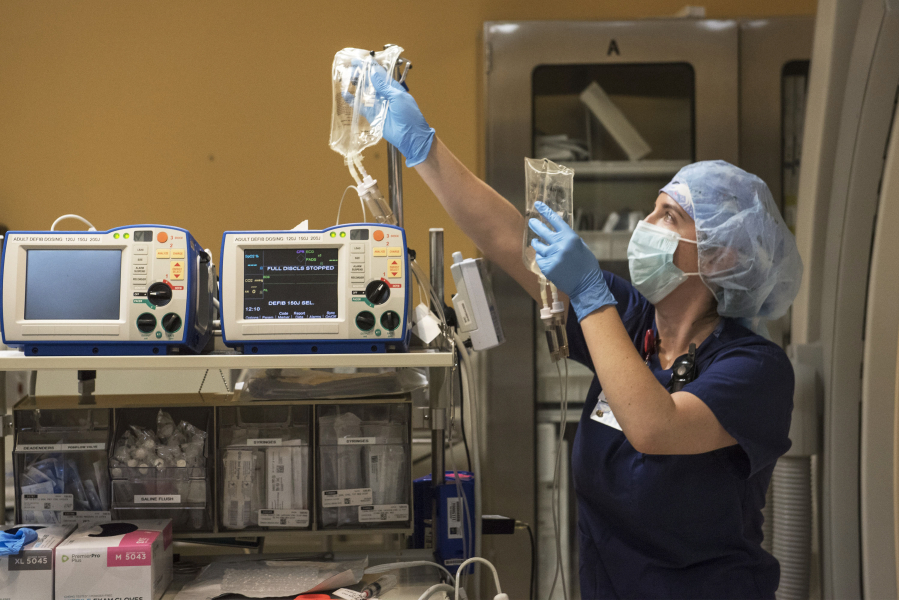There’s plenty of ways to touch someone’s heart.
You can even do it through the leg and wrist, too.
No, we’re not talking about love and romance here; we’re talking about heart surgery.
PeaceHealth Southwest Medical Center is expanding its cardiology services with the opening of a new cardiac catheterization lab in early October and the hiring of cardiologist Dr. Jane Luu.
Those additions will double the hospital’s capacity for catheterization procedures, which are a less invasive form of surgery that can be done by slipping wires into the body through arteries and cuts down on heart surgery procedures that require cracking a patient’s chest open.
“As our community needs expand, our patient population is growing older, and our patient population is having more health needs,” said Dr. Don McAfee, the director of cardiovascular services at PeaceHealth. “It is really going to be additional access for our providers and patients to have services performed here.”
Luu joined PeaceHealth in late August as an interventional cardiologist. She is excited about a couple of components of the new cath lab, which features newer technology that’s very low in radiation, which is a plus for the doctors and patients.
There’s an element of radiation from imaging that’s used during catheterization procedures. Since the chest isn’t open, surgeons can use echocardiograms, which are sonograms of the heart, during catheterization, as well as fluoroscopy, which is kind of like an X-ray movie that can help guide doctors during surgery.
The new cath lab also has a better operating table for patients that support about 100 pounds more than older tables.
“Just for the amount of procedures that we do and this area is the fastest-growing area in the region, it helps off-load cases,” Luu said. “There’s another room, where physicians can get in and do other cases. And that room is state of the art and we can do just about anything in it.”
Up, walking in a day
Luu explained the benefits of catheterization: “Instead of cracking your chest open, where you’re in the hospital for three to five days, five days really, a lot of the patients that we do (transcatheter aortic valve replacements) on, they’re up and walking the next day,” she explained.
There’s still a need for both traditional chest-open heart surgery and the catheterization procedures, but with older populations, catheterization can be helpful because of how invasive opening up a chest is. The hospital uses an adult cardiac surgery risk calculator that helps doctors decide what procedure might be best for the patient.
Luu said she thinks catheterization will grow even more prevalent as health care modernizes.
“That’s what the technology is moving toward,” Luu said. “If you talk to any of the thought leaders in cardiology, percutaneous valve replacements are really going to change medicine. It’s really going to change how we approach this disease, especially in the older population.”




